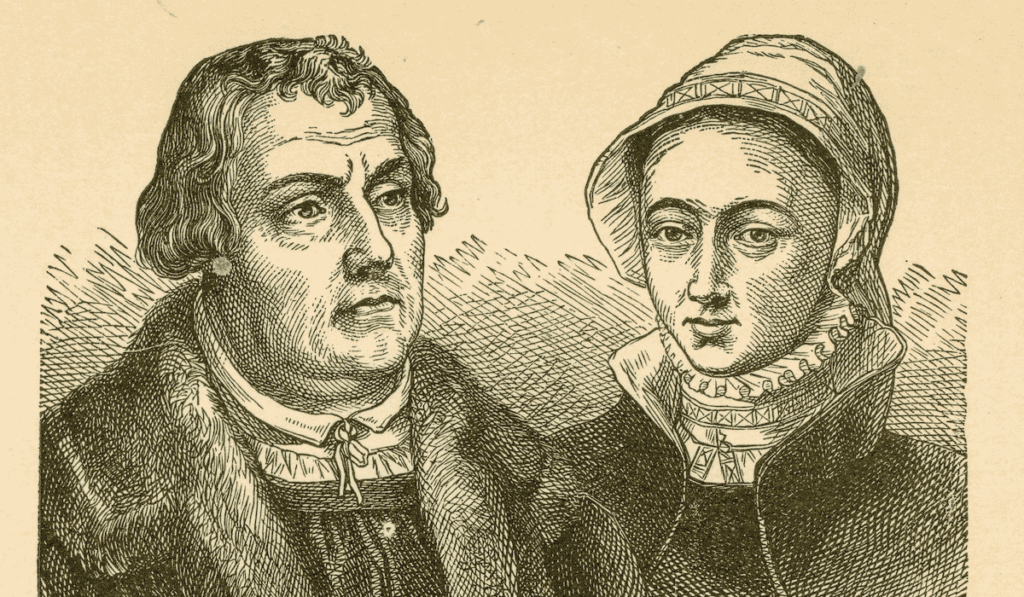by Rev. Dr. Mark Birkholz
Song is a great way to teach. Many of us grew up learning our ABCs, or even the books of the Bible or the names of the disciples, as they were set to popular tunes. Hymnody has always been a great teaching tool, and this was certainly the case during the time of the Reformation. Luther and the Reformers wrote dozens of hymns for use in the church and home as a way to teach the faith.
Over the course of his life, Luther wrote hymns on all six chief parts of the catechism. He did not specifically compose them at one time as a set, and in fact most of these predate the publication of the Small Catechism in 1529, but it is natural that similar themes would be found in both his hymnody and his writings. In some cases Luther modified existing hymns, while others were completely new compositions.
In 1523 Luther wrote “From Depths of Woe I Cry to Thee” (LSB 607), a paraphrase of Psalm 130. Here Luther expresses our only hope for mercy in the mercy and grace of God, which is given to us in Christ Jesus. This hymn connects with Confession and Absolution.
When Luther published his revision of the Latin Mass in 1523, he recommended that German hymns be sung, and he particularly suggested “O Lord, We Praise Thee” (LSB 617) for use as a post-communion hymn. One year later Luther took this 15th century hymn and used it as the basis for the first verse of his updated version, also adding two additional verses. It was a popular hymn in Luther’s time, and continues to be commonly used in the Lutheran church today.
Also in 1524 Luther wrote his hymn on the Creed, “We All Believe in One True God” (LSB 954). Once again Luther took an existing hymn and modified it significantly for use in the churches of the Reformation. Each of the three verses connects an article of the Creed to our faith and life.
Luther wrote two hymns on the Ten Commandments. The best known is another 1524 composition, “These Are the Holy Ten Commands” (LSB 581). The text was original to Luther, but set to the tune of a 13th century hymn. This hymn featured prominently in the catechetical services of Wittenberg held during the season of Lent.
Luther’s final two catechetical hymns were written much later in his life. “Our Father, Who from Heaven Above” (LSB 766) was written in 1539. Each verse begins with a line from the Lord’s Prayer and proceeds to its explanation. “To Jordan Came the Christ, Our Lord” (LSB 406) was composed in 1541. The text begins with the story of Jesus’ baptism and shows how we understand our own baptism in light of Jesus’. It is possible that these two hymns were written to complete the set of hymns on the catechism, but we don’t know for sure.
These six hymns can be a marvelous aid in teaching the faith of the catechism to young and old. Some of the tunes, however, can be challenging to learn.
Here are a few suggestions for incorporating them into the life of your congregation:
- Teach them to a children’s choir and have them introduce the hymns to the congregation.
- Use them along with a sermon series on the catechism (as a whole, or each part over the course of several years).
- Teach them to confirmation students in connection with their catechesis.
- Work through them in conjunction with a “hymn of the month” program.
- LSB Divine Service 5 uses two of these hymns (“We All Believe in One True God” and “O Lord, We Praise Thee”). The others could gradually be incorporated into this service as well.
We are blessed to have these treasures of the Reformation preserved for us in our hymnal. Rather than consider them relics or museum pieces, we would do well to learn them and teach them to the next generation.
The Rev. Dr. Mark Birkholz is pastor of Faith Lutheran Church, Oak Lawn, Ill.

